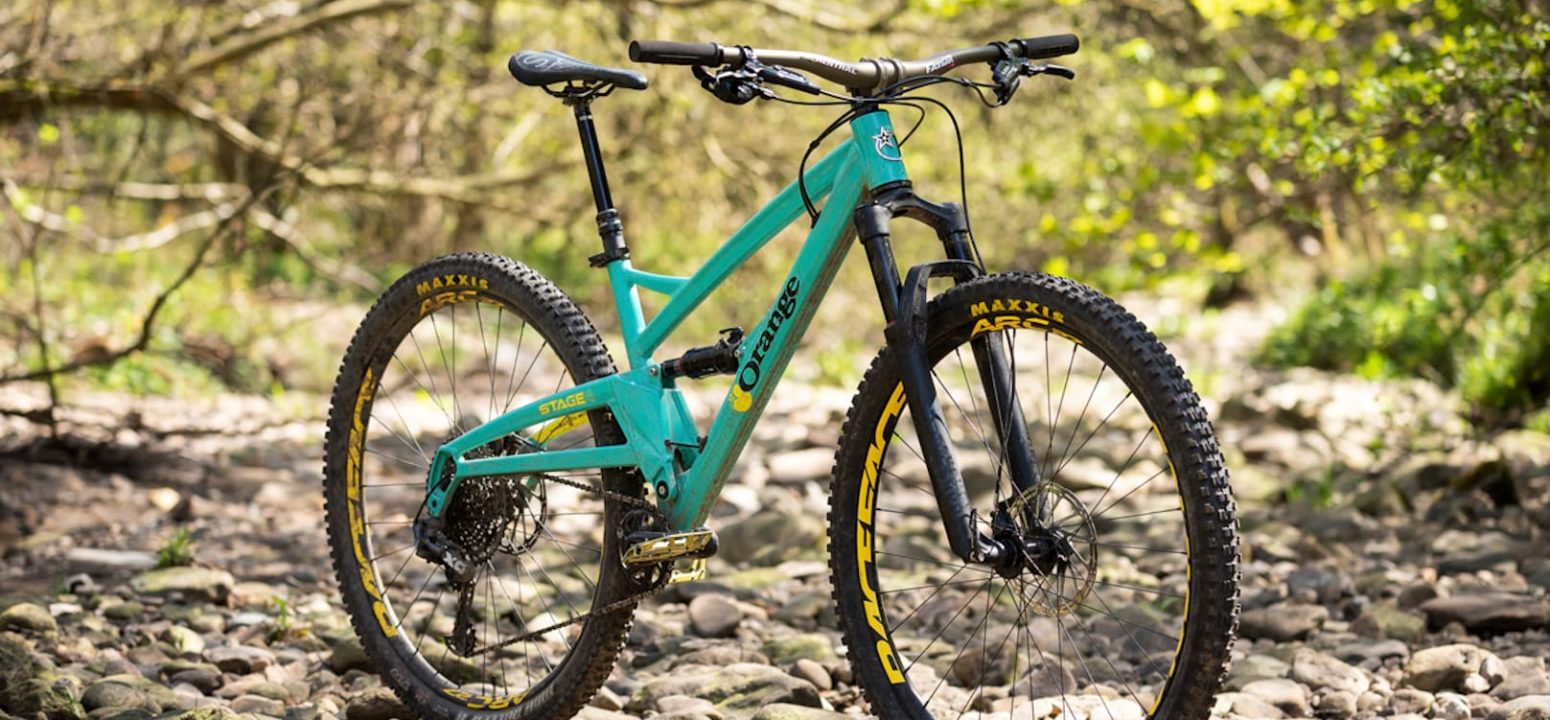When it comes to UK-made full suspension bikes, there was one brand that was always going to be in this grouptest. Put simply, few manufacturers can rival Orange Bikes’ rich 30-year history within the UK mountain biking scene. And unlike the recent flurry of newcomers, Orange has been welding together its full suspension frames in West Yorkshire for 20 of those years. You know, before it was cool.
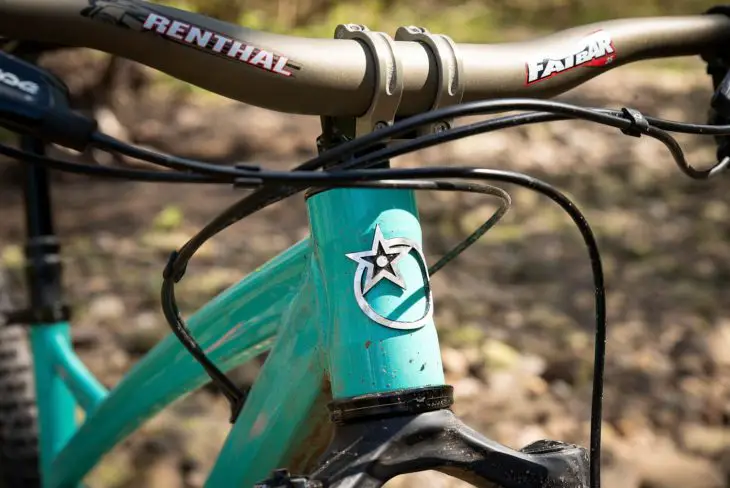
Known for its pursuit of simplicity, strength and gimmick-free design, Orange isn’t a brand to make hasty changes or adopt unproven standards. Instead, the Halifax-based manufacturer has turned evolution into an art form, perfecting its single pivot suspension designs over the years by implementing subtle structural design tweaks and refining geometry along the way.
Case in point – the new Stage 4.
As the freshest full suspension bike from Orange, the Stage 4 slots neatly into the brand’s 29er line-up alongside the bigger travel Stage 5 and Stage 6 models. Featuring 110mm of rear travel and a 120mm fork, the Stage 4 is a peppy short travel trail bike that replaces the previous Segment.
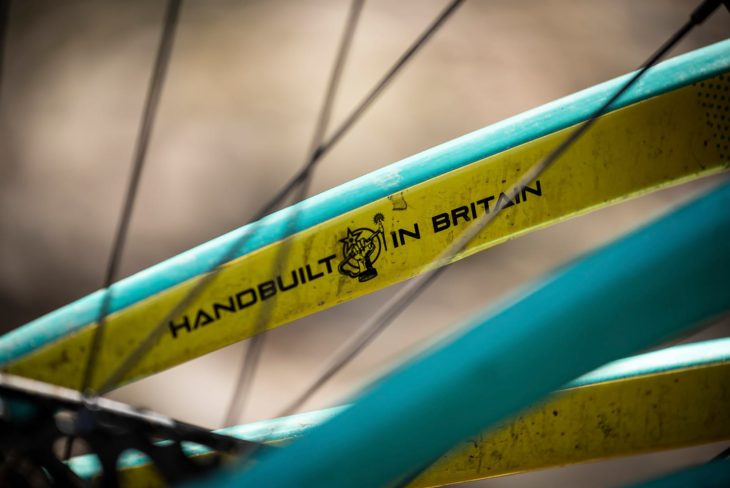
Why the name change? It’s mostly about simplifying the naming structure, though Orange also felt there were enough changes to warrant saying adios to the Segment. Along with a geometry massage, the Stage 4 also ditches the monocoque swingarm in favour of a lighter split-stay arrangement. It’s also the first Orange to feature a metric-sized rear shock – a design choice that has brought noticeable benefits on the trail.
The Stage 4 can be had as a frame for £1,700, with complete bikes starting at £3,600. Each option is available in Medium, Large and X-Large size (no Small size), and there’s a host of various upgrades, paint and graphic options available for those wanting to customise a little further.
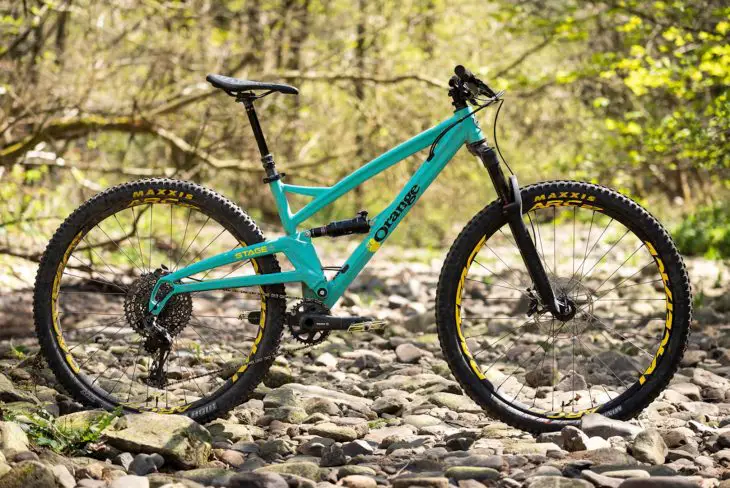
The Bike
It’s clear upon first glance that the Stage 4 is no skinny cross-country marathon bike. With its complex folded and welded downtube and burly specification, the Stage 4 RS doesn’t exactly look like most other 110mm travel 29ers – this is a proper trail bike.
As with all Orange full suspension frames, the Stage 4 is built from 6069-T6 heat-treated alloy. The swingarm, top and downtubes start their life as flat sheet metal, which is then folded and articulated into highly complex shapes. Neat fat welds run along the seams underneath each tube, sealing the hollow structure. For both strength and precision, key junction points are CNC machined from solid billet aluminium, including the hollowed 148x12mm dropouts, rear shock mounts, 73mm threaded bottom bracket, and 49mm diameter head tube.
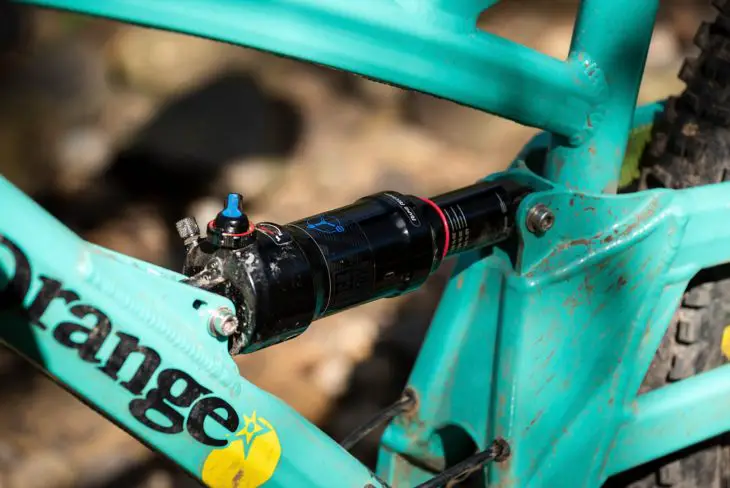
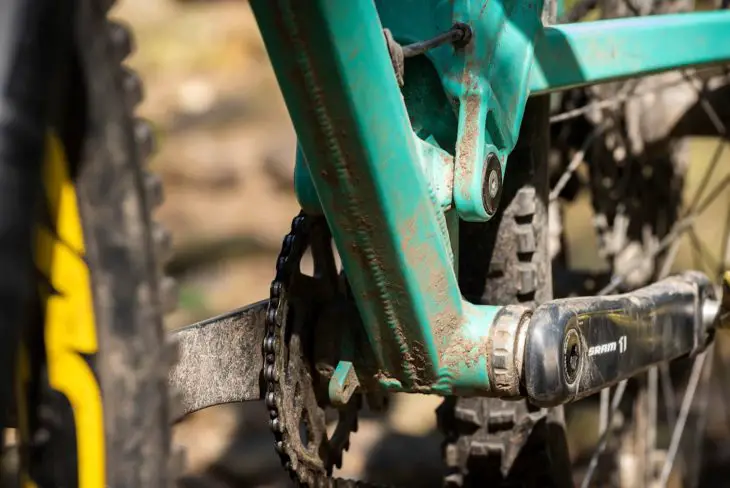
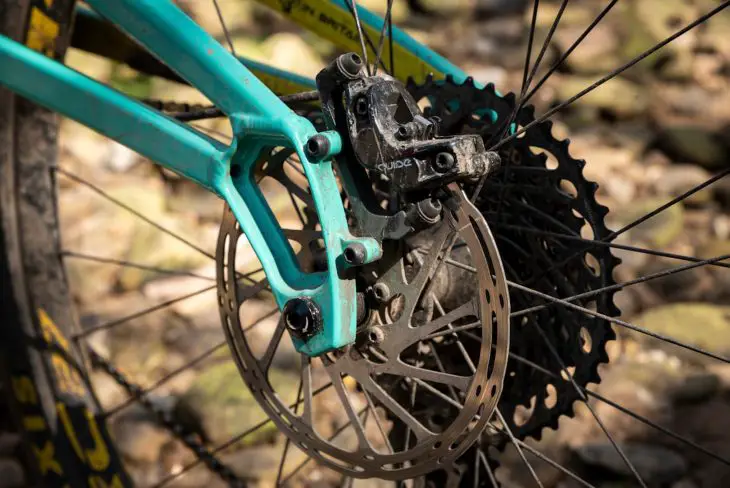
The swingarms and mainframes are welded separately, with several alignment checks along the way to ensure any swingarm will line up perfectly with any front end. That said, like the Segment and Stage 5 I’ve tested previously, I still found that the dropouts needed splaying slightly when installing the rear hub.
Despite the burly appearance, Orange has managed to chisel some weight off the old Segment, with the Stage 4 frame coming in at 2.83kg (6.24lbs) with the rear shock. A lot of this has to do with the split-stay swingarm, which lowers weight while maintaining similar stiffness levels to the monocoque design used on the Segment, Five, and Stage 5.
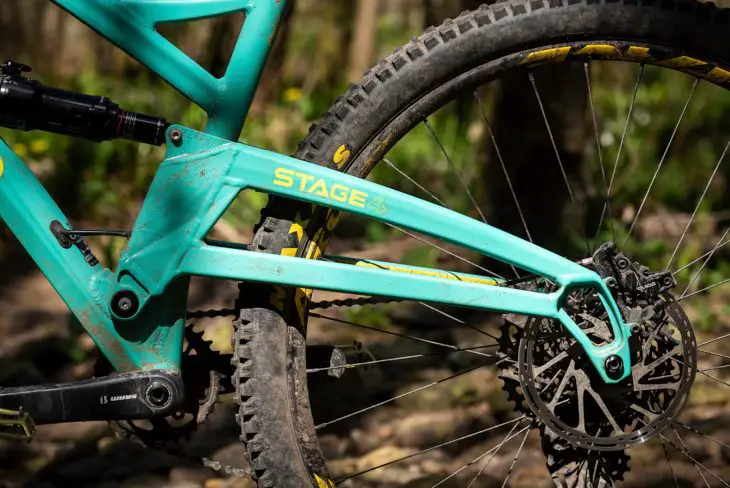
The robust, carbon-free build kit quashes any real emphasis on weight-saving though, but it helps to provide some clues as to what sort of riding the Stage 4 is up for. You’ll find powerful quad piston SRAM Guide brakes and 180mm rotors, along with huge 800mm Renthal Fatbars and a chunky Maxxis Minion DHF tyre up front.
There’s a proper 150mm travel dropper post, and a RockShox Pike that looks particularly stout in its shortest 120mm configuration. For those unconvinced of the retention qualities of the Eagle chainring (honestly, you needn’t worry), ISCG 05 tabs are chain guide ready.
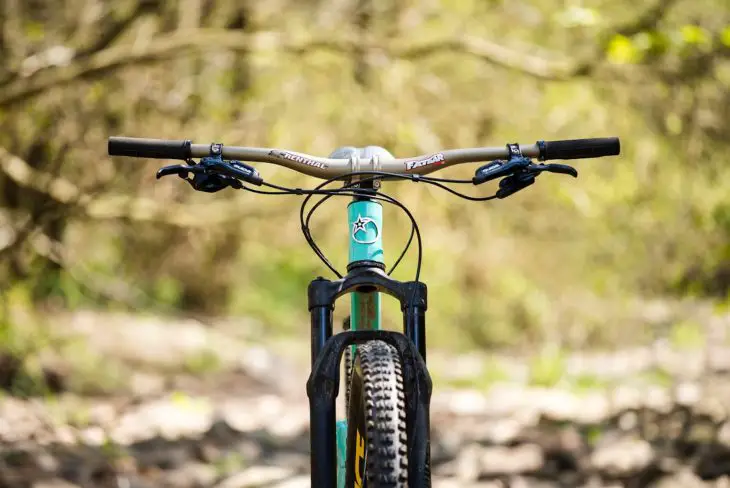
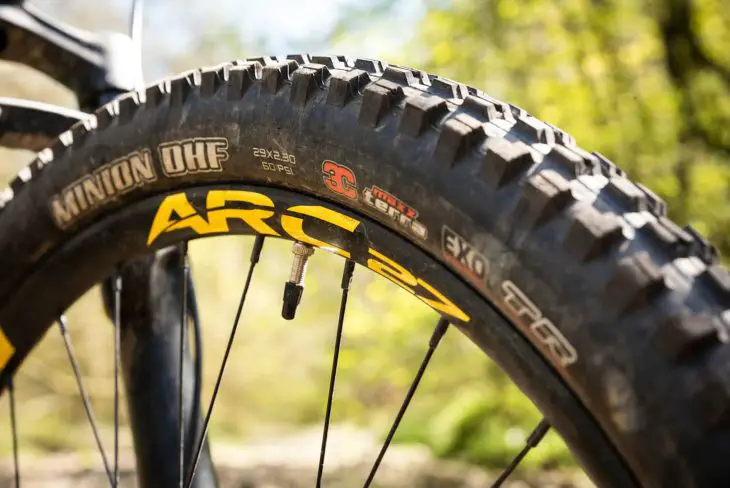
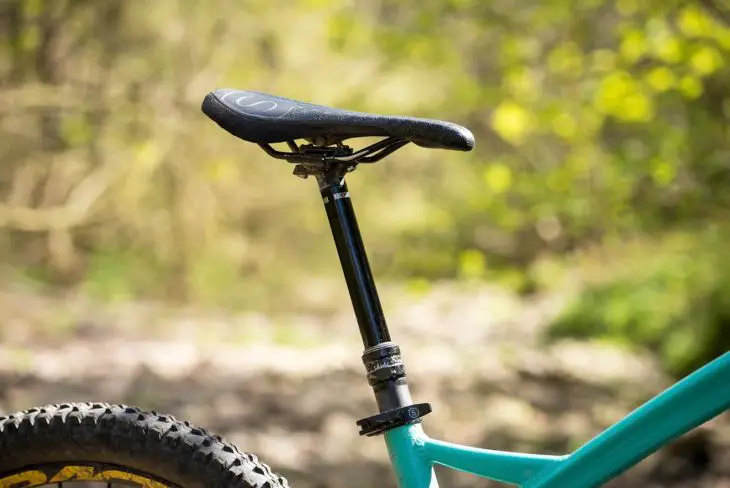
Like the build kit, frame geometry is progressive for a short travel 29er. Orange has increased the reach by 10mm over the Segment (444mm on the Medium), while slackening the head angle half a degree to 67.5° and increasing BB drop to 45mm. This has helped lower the bike’s centre of gravity, and it’s also broadened the front centre footprint.
Overall wheelbase length remains the same at 1167mm though, since the chainstays have been shortened to 435mm. Along with a steeper 74.5° seat angle, the Stage 4 promises to retain the pert handling and pedal-ability of the Segment it replaces, with a bit more oomph for the downs.
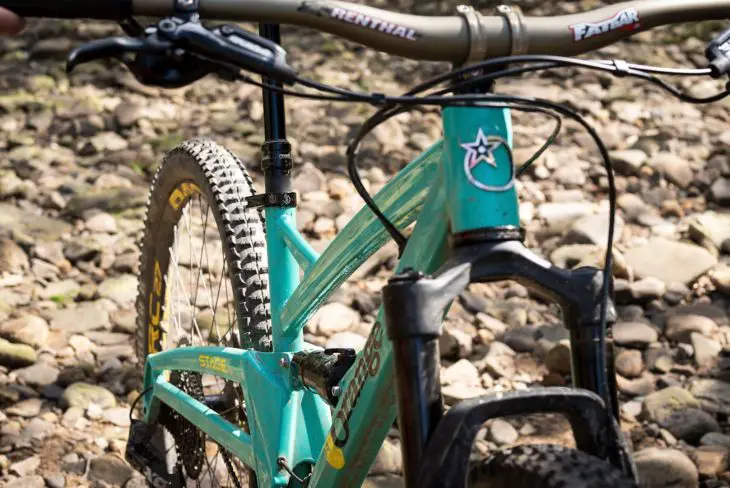
Having spent a lot of time on the Segment – a bike I thoroughly enjoyed – I’d been keen to swing a leg over the Stage 4 ever since it was announced. And given that the bigger travel Stage 5 won an Editor’s Choice Award last year, would the Stage 4 prove to be just as good?
The Ride
Given the similar build kit, the Stage 4’s riding position feels almost identical to the Stage 5 – just a bit closer to the earth. It has a grounded and sure-footed demeanour, with your contact points spread wide over the cockpit. The stretched riding position can be a little uncomfortable on longer and more pedally rides out in the hills, which is something that could be solved with a steeper seat angle.
Meandering on the flats isn’t really what this bike is about though.
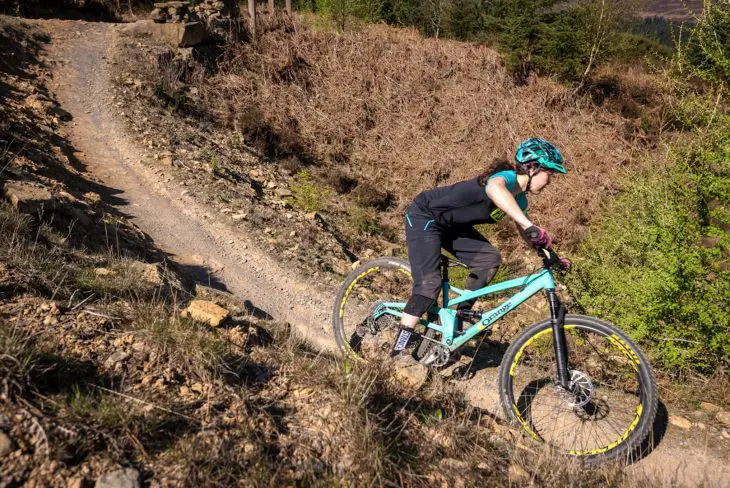
With its wide bars, low BB and long front centre, the nimble Stage 4 is eager to dissect tight and twisty trails. The combination of its go-fast geometry and low-riding chassis means that it loves to corner hard and fast, and within the first few turns I was dropping the inside grip as low to the ground as I could possibly get it. Providing the trail surface isn’t gloopy, there’s great cornering traction from the tubeless Maxxis rubber, giving the Stage 4 oodles of confidence for pushing into the turns.
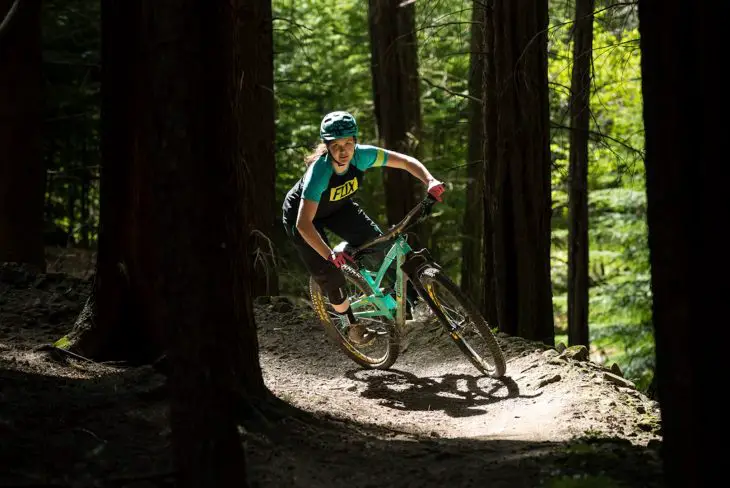
Rear suspension action has improved over the Segment, with the bigger shock dropping the average leverage ratio from 2.89:1 to 2.75:1, improving suppleness and consistency. The mostly linear leverage rate means you’ll still need to fine-tune with volume spacers though. I added a third token to curb bottoming, and settled on 215 psi with the rebound damping set one click faster than halfway.
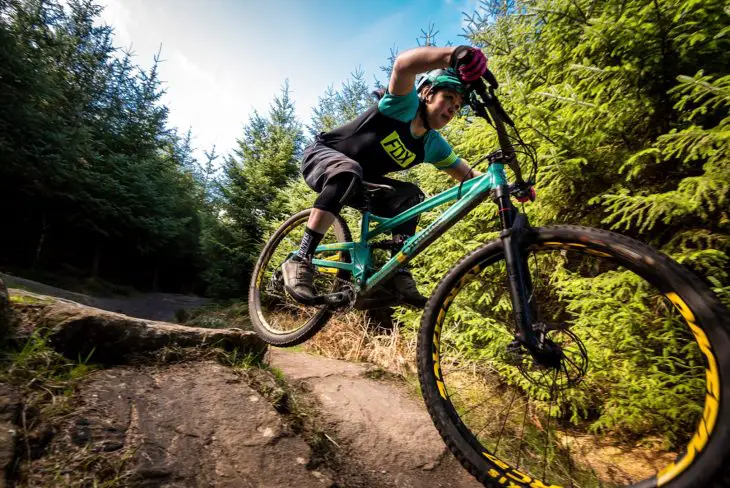
Set up at 30% sag, the Stage 4 delivers a smooth and active feel, but it isn’t quite as plush as other bikes with more complex linkage systems. It’s an efficient pedaller though, with the high and forward pivot point delivering usable anti-squat for hard efforts. When sprinting out of the saddle, the suspension stiffens up nicely to propel you forwards with negligible energy loss. If you’re just plodding along though, I found smooth, seated pedalling to be the best approach.
As the trail gets rougher, the same anti-squat that helps mitigate pedal bob starts to become an issue on slabby rocks with chain tension affecting suspension activity. This isn’t any different to the Segment, but because the geometry on the Stage 4 is even more capable you can easily find yourself in some pretty hot situations where the suspension gets out of its depth.
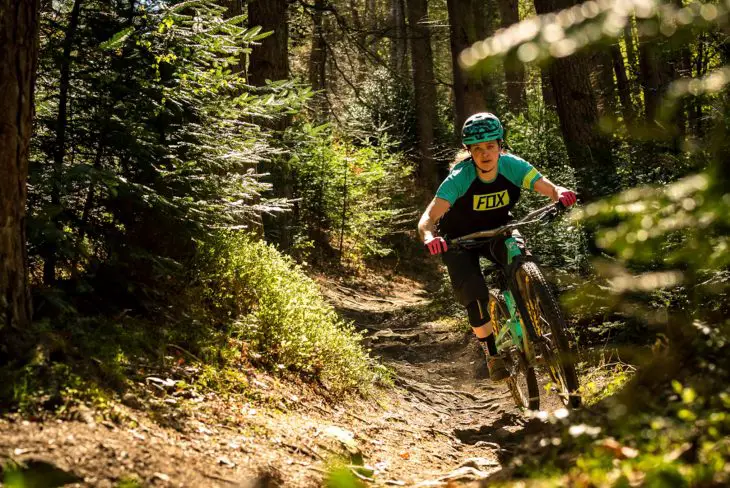
At speed on machine-gun stutter bumps, there’s a lot of feedback through the pedals, and on particularly violent impacts I found my feet could occasionally be bounced off the pedals. This was more noticeable on the Stage 4 compared to the Stage 5, likely because there’s less travel to hide behind.
I wouldn’t say this is a weak point of the Stage 4, but more a reminder that there’s only 110mm of travel. There is a flip side too, because the Stage 4 relishes riding very fast on smoother trails. In these situations it is properly rapid, delivering a lovely slingshot effect when popping out of the corners.
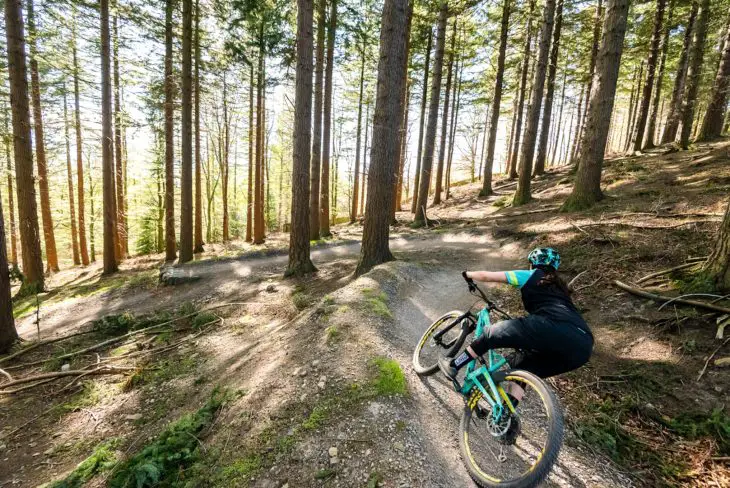
Everything else performed as expected. It didn’t take long to wear through the organic brake pads during a very wet winter and spring, so let’s have sintered pads please. And while the drivetrain worked fine I found the shift feel to be quite heavy, which seems to be due to the tight bend the cable makes as it enters the downtube. Given the huge mud clearance and simplistic suspension design, I’d rather see external cabling to complete the bike’s workhorse ethos.
I did add some dings into the relatively soft Race Face rims. Orange does offer a Stan’s Flow MK3 rim upgrade, which I’d highly recommend given how hard and fast this bike can be ridden.
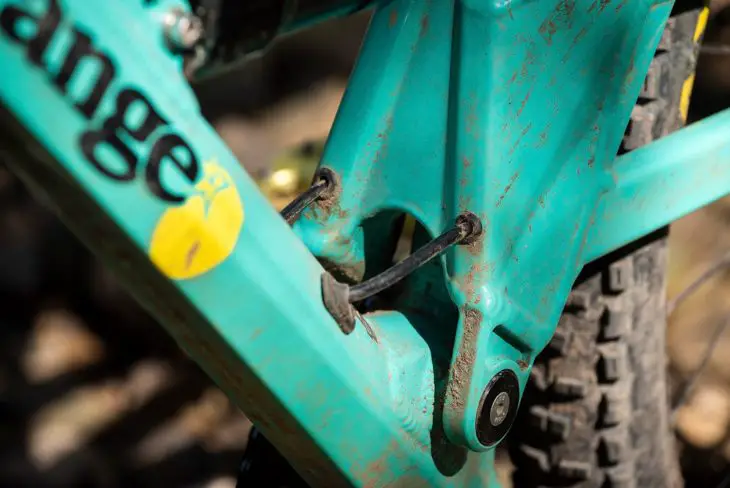
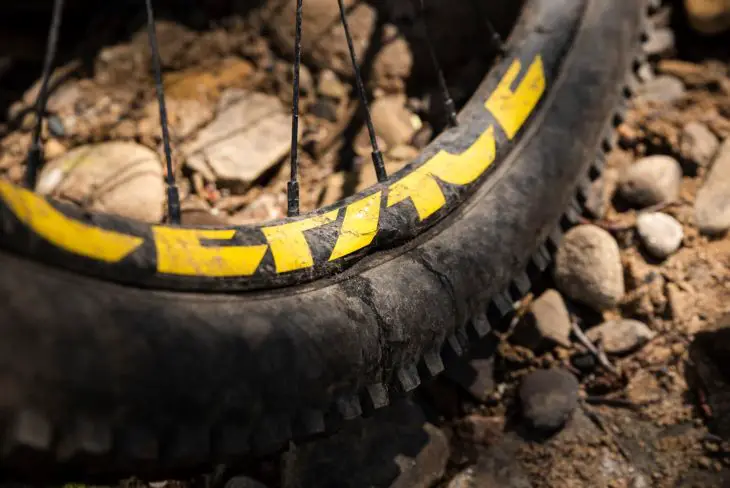
Overall
Compared to the Segment, the Stage 4 is indeed a better trail bike in every way. With its curious combination of short travel and cocksure geometry, it’s still a difficult bike to pigeonhole.
Genre aside, the Stage 4 is just a riot to ride. Its gung-ho enthusiasm means you can hit the limitations of its suspension design on much rougher terrain. Bear that in mind and get it onto the right trails though, and the Stage 4 will no doubt leave you with your heart beating out of your chest and a shit-eating grin on your face at the end of every ride.
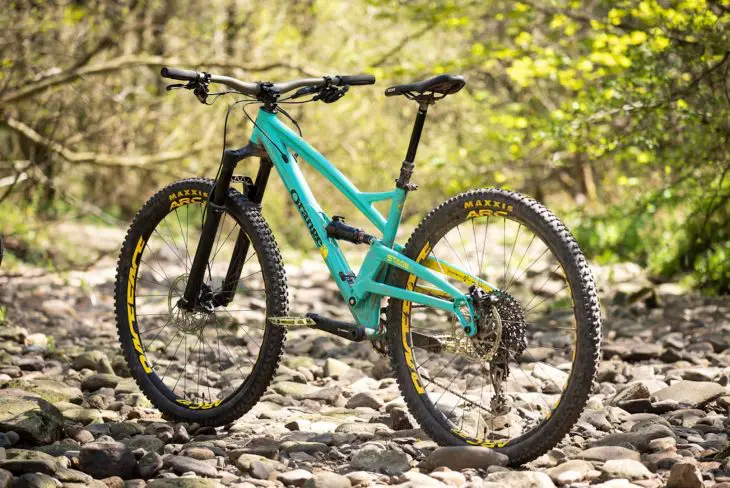
Orange Stage 4 RS Specifications
- Frame // 6061-T6 Monocoque, 110mm Travel
- Fork // RockShox Pike RCT3, 120mm Travel
- Shock // RockShox Deluxe RT3 DebonAir
- Hubs // Hope Pro 4, 110x15mm Front & 148x12mm Rear
- Rims // Race Face ARC 27, 27mm Internal Width, 32h, Tubeless Compatible
- Hubs // Hope Pro 4, 110x15mm Front & 148x12mm Rear
- Tyres // Maxxis Minion DHF EXO 3C MaxxTerra 2.3in Front & High Roller II EXO 2.3in Rear
- Chainset // SRAM X1 Carbon, 32t X-Sync 2 Chainring
- Rear Mech // SRAM X01 Eagle, 12-Speed
- Shifters // SRAM GX Eagle, 12-Speed
- Cassette // SRAM XG-1275, 10-50t, 12-Speed
- Brakes // SRAM Guide R, 180mm Front & Rear
- Stem // Renthal Apex 35, 50mm Long
- Bars // Renthal Fatbar 35, 800mm Wide, 20mm Rise
- Grips // Strange 130 Single Lock-On Black
- Seatpost // RockShox Reverb Stealth, 30.9mm, 150mm Travel, 1x Remote
- Saddle // SDG Fly MTN Steel Rails
- Size Tested // Medium
- Sizes Available // Medium, Large, X-Large
- Weight // 13.55kg (29.81lb)
- RRP // £4,710 (as tested)
This review was published in Issue #119 of Singletrack Magazine as part of our UK-made full suspension group test. Keen to read more? You can check out all of the stories and features from Issue #119 of Singletrack Magazine right here.
Review Info
| Brand: | Orange |
| Product: | Stage 4 RS |
| From: | Orange Bikes, orangebikes.co.uk |
| Price: | £4,710 (as tested) |
| Tested: | by Wil Barrett for 4 months |
